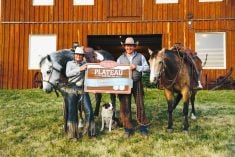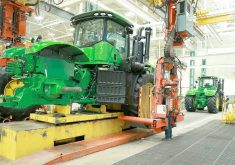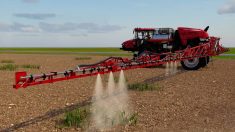Last month a milestone was marked in the history of world agriculture when the bovine disease rinderpest was officially declared eradicated (see page 20).
Unfortunately, other diseases which threaten agriculture have yet to be wiped out, and at least one affects farmers rather than livestock. That’stillage recreationalis,the desire to cultivate for no good reason. It has been pretty much eliminated on the Canadian Prairies but seems to be endemic elsewhere. On a visit to Belgium in April last year, we saw fields in a hilly region relentlessly plowed up and down rather than on the contour. A soil conservation technician said that an average of five tonnes per hectare was being lost on 20 per cent of the farmland in Belgium. Despite generous government incentives to plant grassed strips to slow run-off, there was little uptake. Old habits die hard, as we in Western Canada learned when the practice of black summerfallow led to the dust bowl of the 1930s.
Read Also

Guarding against misinformation: Do you believe in house hippos?
Misinformation and disinformation run rampant in today’s digital age. Farmers must be wary of the digital dangers and know how to keep themselves safe.
While on a Canadian Foodgrains Bank tour of Ethiopia in 1996, it was even more disturbing to see the massive soil loss caused by tillage on the steep slopes in much of the country. Unlike the recreational tillage that can be conducted from the comparative ease and comfort of a tractor cab, this was bone-jarring work by oxen and the farmers behind them, wrestling a primitive plow that was no more than a steel blade attached to a stick.
Some of us observed how much better things could be if the farmers simply rotated the blade 90 degrees and used it only once a year to open a slot in which to place the seed. That might have to be done manually, as would the weeding, but while that may sound like a lot of work, each farmer had only two or three acres and at least five kids to do weeding with hoes.
It’s tough to go a day without seeing a reference to the need to double world food production by 2050. The next sentence usually refers to the advanced technology needed, usually referring to varieties or machinery. High-yielding varieties mean nothing if the soil has disappeared, and the new technology requires large machinery and large acreages, it means evicting the smallholder farmers and their children to an uncertain future.
Instead, the goal should be producing more food and keeping as many farmers on the land as possible. Hence the objective of a UN Food and Agriculture Organization (FAO) initiative launched last month. The Save and Grow program is designed to bring the theory and practice of conservation agriculture to the 2.5 billion people on small farms in low-income countries.
The FAO’s Save and Grow program and the eradication of rinderpest are reminders that the biggest challenge is not necessarily the development of new technology, but the adoption of existing technology. For millions of farmers, what may be needed is a few tools, a bit of fertilizer or the knowledge of what crops work best in a rotation. Improved varieties will also be necessary, but for meeting the food-production challenge, the simple solutions will make the biggest difference.
———
IthasbeenprettymucheliminatedontheCanadianPrairiesbutseemstobeendemicelsewhere…














